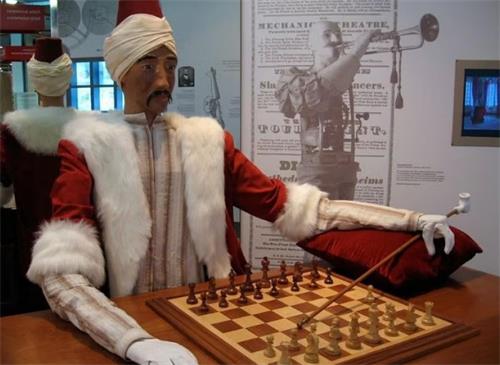
The Turkish Chess Automaton, an enigmatic mechanical contraption dating back to the latter part of the 18th century, asserted that it had the ability to play chess all on its own, without human interference.This seemingly magical machine was, in fact, an elaborately crafted hoax that continues to captivate people to this day. Known simply as The Turk, the automaton played against numerous famous figures across Europe and America, including Napoleon. The truth regarding the deception of The Turk didn't start to come to light until this mechanical wonder was consumed by a fire in Philadelphia in 1854.
The inventor of the Turkish Chess Automaton was Austrian engineer Wolfgang von Kempelen, who designed the device in 1734. Kempelen was inspired by a performance at Schönbrunn Palace for Empress Maria Theresa and set out to create a spectacle that would blend mechanical ingenuity with the illusion of human intelligence. The automaton was built into a wooden cabinet that contained an intricate system of gears and mechanical parts.At its center sat a life-sized puppet dressed in traditional Turkish robes and a turban. This puppet was presented as capable of moving chess pieces on its own, challenging even the most skilled players.
However, the internal workings of The Turk were far from what they appeared.On the left side of the cabinet were clock-like gears, while the right side housed simple brass structures. To ensure the hoax remained undetected, multiple clever design elements were incorporated. For instance, a movable seat inside allowed the hidden operator to shift positions, avoiding detection from curious spectators. The complex arrangement of hidden compartments and false panels made it nearly impossible for onlookers to realize someone was inside.
Beneath the board were numbered markings, and each chess piece contained a small magnet. The operator could track the game by observing the movements of these magnets. The board was connected to the puppet's arm through a system of levers and pulleys, allowing the hidden operator to precisely control the puppet’s hand movements to move the pieces. Combined with sophisticated ventilation, lighting mechanisms, and even facial expressions controlled from inside, the automaton seemed almost lifelike, making it exceedingly difficult for audiences to detect the deception.
A device was added that allowed the puppet to vocalize the word “Check,” increasing the interactive nature of the performance. The operator could even communicate with the outside world through a special copper disc system, making the chess matches appear even more dynamic and authentic.
Despite the sophisticated design, some astute spectators and players eventually grew suspicious of the automaton's true nature. In reality, The Turk was never a fully autonomous machine; it was always operated by a skilled chess player hidden within the cabinet, manipulating the game from inside. Nevertheless, the hoax captivated countless audiences and challengers, becoming one of the greatest spectacles of the late 18th and early 19th centuries.
From its debut in 1770 until its destruction in 1854, The Turk toured the world, defeating numerous chess masters, even besting Napoleon’s own players. This mechanical illusion was not only a marvel of the era’s technological capabilities but also a masterclass in psychological manipulation. Through his intricate mechanical designs and psychological tactics, Kempelen convinced audiences of the automaton's authenticity.
The Turk’s fifty-year run came to an end when it was completely destroyed in a fire in 1854, finally closing the chapter on its storied history. Although the hoax was eventually exposed, its influence on the fields of mechanics, psychology, and the art of illusion has been profound and lasting.

Ocean,Mercury Pollution
Is There Human-Caused Mercury Pollution in the World’s Deepest Ocean Trench?
Over 60 years ago, Japan’s Minamata disease scandal shocked the world, with methylmercury as the culprit. Mercury, a highly toxic pollutant, spreads through air and water, dispersing globally.

Egypt’s Queen Cleopatra
Power and Desire: The Interwoven Fates of Egypt’s Queen Cleopatra
Cleopatra was the last Pharaoh of ancient Egypt, and her name has been forever linked to power, love, and choices.

Atlantis
Atlantis—A Mythical Tale or a Real Lost Civilization?
Atlantis, one of the most famous lost civilizations in the world, continues to hold an important place in the research of historians, archaeologists, and mythologists.


